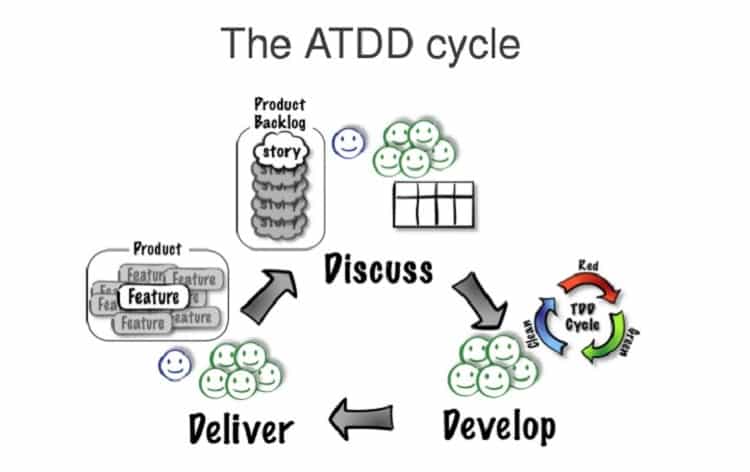ATDD stands for Acceptance Test-Driven Development. It is a popular development method that connects the customers, developers, and testers together. The method is inspired by various other popular development methods such as Specification By Example(SBE), Example-Driver Development(EDD), Story Test-Driven Development(SDD) and Behavior-Driven Development(BDD).
All these methods help the developers and testers to understand the requirements of the customers. Therefore, the implementation of the application is better, and customer satisfaction is maximum. ATDD is closed related to TDD, and the only difference is that acceptance testing that helps the developers to clearly understand the customer’s needs before starting to code.
The Difference Among TDD, BDD, and ATDD –
These three development methods are quite popular and may seem to be similar. TDD mainly focuses on developers where the other two focuses on customer, developer, and tester. But if we give for an in-depth look, you will find that TDD focuses mainly on unit testing, while BDD is focused on the requirements of the customers. But ATDD combines both of them and focuses on acceptance tests. Therefore, the rejection of the implementation from the customers is least and the implementation time is less as the developers as well as the testers are clear what they need to do.
Benefits of ATDD Framework –
The reasons why the implementation of the acceptance test-driver development framework is so high these days are as follows.
Better Collaboration – The collaboration of the clients, developers, and testers is essential for better and faster development. ATDD framework is designed to improve this collaboration and especially clear out the critical parameters and requirements. All the misunderstandings will be clear before the actual implementation can begin. Therefore, the scope for reworking reduces and hence, the development will be faster.
Clear Criteria – In any project, there are various ambiguities the developers come across from the requirements of the customers. While it is not guaranteed that all the complicities will be simplified, but it is certainly going to clear different confusions beforehand thanks to clear acceptance test criteria. This is applicable for both developers and testers.
Automation – Automation is a major part of development these days and going forward, it is going to be very common. Using the ATDD framework, the acceptance criteria can be automated. Therefore, the time period of overall understanding, implementation and testing will reduce. This will decrease the requirement of human effort in certain pockets that are basic and repetitive.
Better Code Quality – When you test before your code, the code quality is sure to be better. With the prior test, you can design the classes better and therefore, implementation will be well thought and planned. One has to design test up front, and therefore, there is more time spent on planning the classes by the transformation from the test cases.
Working Of ATDD Framework –
The development process begins by user needs discovery whereby operational testing is done for validation. Then we move on to user requirement engineering and detailed understanding and the entire process is validated by the most important acceptance testing. The next step is system requirements engineering, and system testing is the natural validation process for the project to work properly.
The next step is architecture engineering which is as important as the system requirements. Then comes the designing part and there are various integration testing involved. Finally, we have the coding and fabrication and unit testing for validation.
Conclusion –
It is time to move on from TDD and BDD to ATDD. It is more efficient in the development process, and there will be less confusion, less rejection, and fewer modifications requirements. This is going to increase the collaboration of the customers and developers and testers better which is important for easy development of any project.

